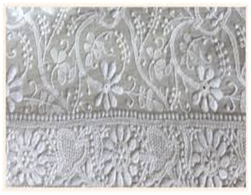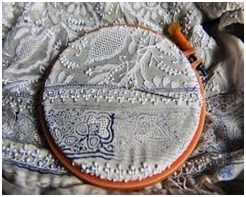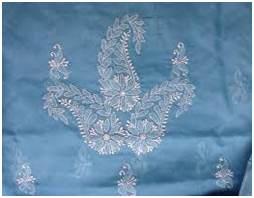Uncategorized
The Art of Lucknow Embroidery
Lucknow embroidery, also known as “Chikan” embroidery, is a timeless craft that originates from the city of Lucknow in India. Renowned for its intricate designs and delicate craftsmanship, Chikan embroidery has become synonymous with the rich cultural heritage of the region. This exquisite form of hand-embroidery not only reflects the artistic prowess of skilled artisans but also carries a historical narrative that intertwines with the socio-cultural fabric of Lucknow.
Historical Background
The roots of Lucknow embroidery trace back to the Mughal era, particularly during the reign of Emperor Akbar in the 16th century. It flourished under the patronage of the Mughal court, where artisans were encouraged to innovate and experiment with various styles. The craft was further popularized during the rule of Nawab Asaf-ud-Daula, who took a keen interest in promoting arts and crafts in Lucknow. He invited skilled embroiderers from across the country to enhance the craft’s sophistication and intricacy.
As a result, Chikan embroidery evolved into a distinctive art form characterized by its fine needlework, floral patterns, and elegant motifs. The influence of Persian and Mughal aesthetics is evident in the designs, which often depict intricate floral patterns, geometric shapes, and nature-inspired elements.



Techniques and Styles
Lucknow embroidery is celebrated for its meticulous techniques, which involve various stitches that create depth and texture. Some of the most popular stitches used in Chikan embroidery include:
- Murri: A simple yet elegant stitch used to create floral patterns.
- Bakhiya: A shadow work stitch that adds a three-dimensional effect to the designs.
- Phanda: A knot stitch that is often used to outline flowers and leaves.
- Keel: A stitch resembling a chain that adds decorative borders.
These techniques, when combined, produce stunning pieces of fabric that showcase the artisan’s skill and creativity. The embroidery is typically done on lightweight fabrics like muslin, cotton, and silk, making it ideal for the hot and humid climate of North India.
Cultural Significance
Lucknow embroidery holds significant cultural value, as it represents the synthesis of artistic traditions and historical influences. The craft is not merely a decorative art; it embodies the stories and lives of the artisans who dedicate their time and effort to preserving this heritage. Each piece of embroidered fabric carries a sense of identity and pride, connecting the present generation to their ancestors.
Moreover, Chikan embroidery has played a crucial role in the local economy, providing livelihoods for many families. It has empowered women artisans, allowing them to contribute to their households while preserving their cultural heritage. Efforts to promote Lucknow embroidery, both locally and globally, have increased awareness and appreciation for this intricate craft.
Contemporary Revival
In recent years, there has been a resurgence of interest in Lucknow embroidery, driven by a growing appreciation for artisanal crafts and sustainable fashion. Designers and brands are increasingly incorporating Chikan embroidery into their collections, blending traditional techniques with modern aesthetics. This revival has not only helped in preserving the craft but has also opened new avenues for artisans to showcase their work.
Various organizations and initiatives are working to promote Lucknow embroidery, providing training and resources to artisans, ensuring that this ancient art form continues to thrive. By raising awareness and creating a market for Chikan embroidered products, these efforts aim to sustain the livelihoods of artisans while keeping the rich heritage of Lucknow alive.
Conclusion
Lucknow embroidery is more than just a decorative art; it is a living legacy that encapsulates the history, culture, and artistry of a region. Its intricate designs and delicate craftsmanship speak to the heart of Indian heritage, reminding us of the importance of preserving and promoting traditional crafts. As we celebrate the beauty of Lucknow embroidery, we also honor the artisans who dedicate their lives to this art form, ensuring that the stories woven into each piece continue to resonate with generations to come.
